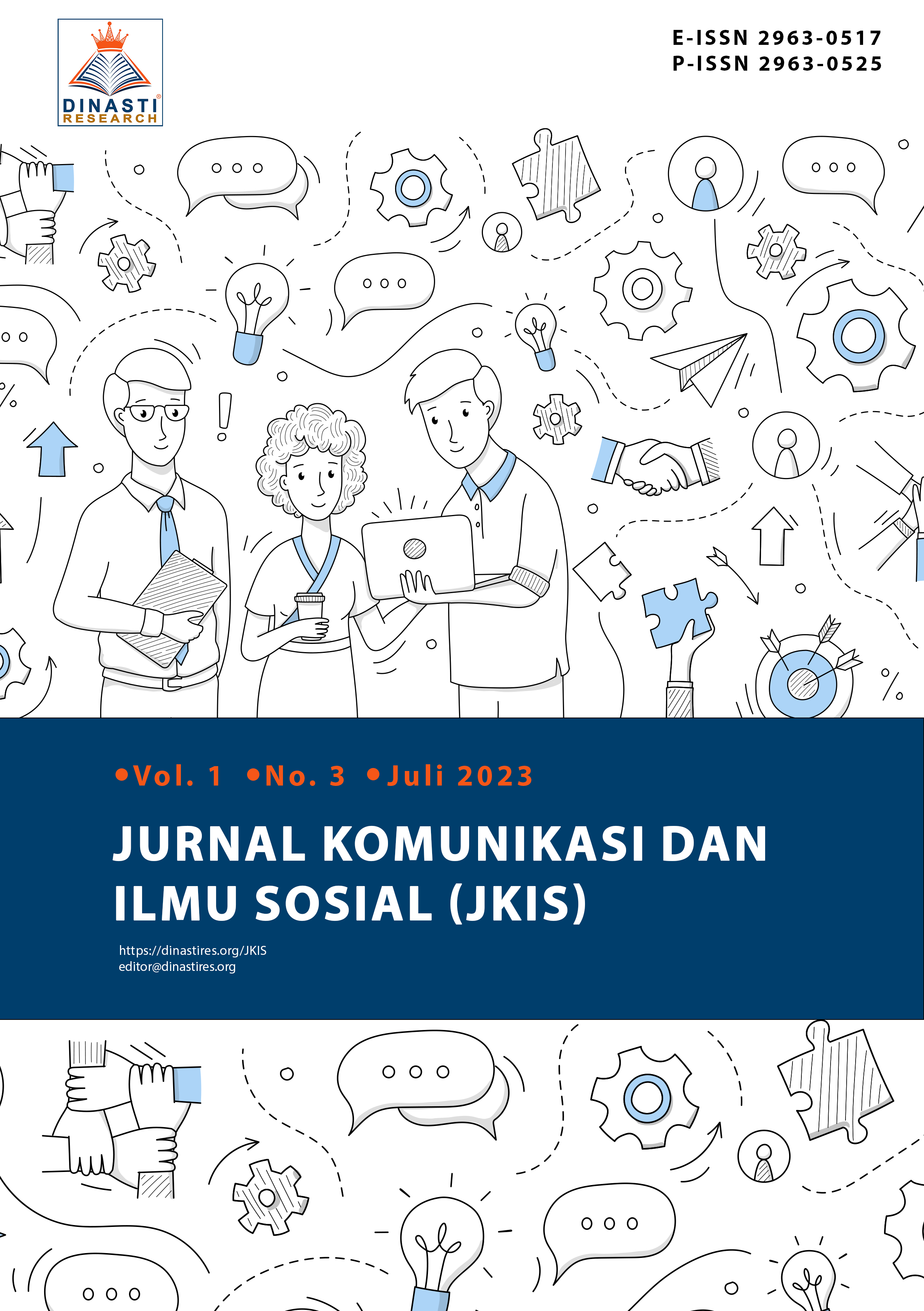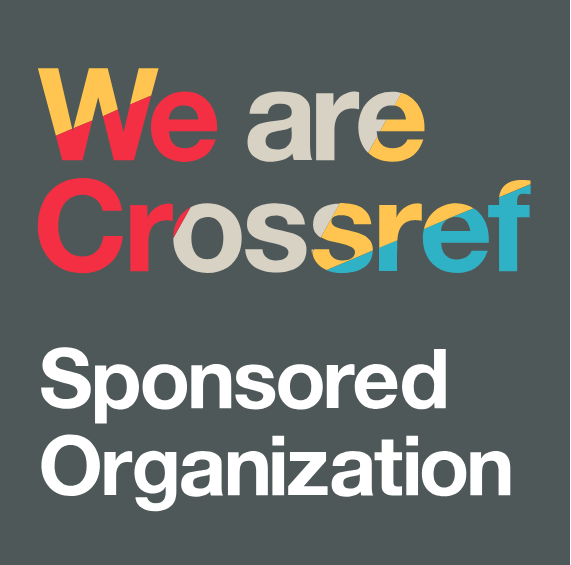Menanggapi eWOM Negatif dalam Meningkatkan Niat Belanja Online: Sebuah Pendekatan Studi Literatur
DOI:
https://doi.org/10.38035/jkis.v1i3.164Keywords:
eWOM Negatif, Konstruk Formatif-Reflektif, Niat Belanja OnlineAbstract
Karena penelitian ini menggunakan indikator-indikator yang memberikan perubahan besar pada konstruknya dan berkontribusi tinggi, pendekatan konstruk formatif dan reflektif dipilih. Penelitian ini menggunakan pendekatan studi literatur untuk mendapatkan rujukan dan hasil penelitian yang relevan. Studi literatur diperoleh dari berbagai jurnal terindeks dan bereputasi adalah sumber utama sebagai keputusan dalam menjelaskan hasil penelitian. Setelah dilakukan tinjauan literatur secara intensif, hasil penelitian ini memberikan pengetahuan bahwa menanggapi eWOM negatif yang dibangun melalui aspek: segera meminta maaf, segera memberikan penjelasan, segera memberikan kompensasi, dan segera berjanji untuk menyelesaikan ulasan negatif, memiliki kekuatan dalam meningkatkan niat belanja online seperti: suka belanja, bersedia belanja, bersedia bertransaksi dalam waktu dekat, dan bersedia belanja di masa depan. Ketika konsumen merasa ketidaksesuaian antara pengorbanan seperti: biaya, waktu, dan tenaga, dengan kinerja produk atau layanan dari aplikasi atau situs web yang diharapkan, pelaku usaha dapat menanggapi konsumen dengan cara: segera meminta maaf, segera menjelaskan, segera memberikan kompensasi, dan segera berjanji untuk memperbaiki masalah dalam ulasan negatif. Strategi ini dipastikan dapat meningkatkan niat konsumen untuk melakukan aktivitas belanja online.
References
Ajzen, I. (1985). From Intentions to Actions: A Theory of Planned Behavior. Action Control, 11–39. https://doi.org/10.1007/978-3-642-69746-3_2
Ajzen, I. (1991). The theory of planned behavior. Orgnizational Behavior and Human Decision Processes, 50, 179–211. https://doi.org/10.1016/0749-5978(91)90020-T
Ajzen, I. (2011). The theory of planned behaviour: Reactions and reflections. Psychology and Health, 26(9), 1113–1127.
Ali, H., Evi, N., & Nurmahdi, A. (2018). The Influence of Service Quality , Brand Image and Promotion on Purchase Decision at MCU Eka Hospital. Business and Management Studies. https://doi.org/10.21276/sjbms.2018.3.1.12
Ali, H., Hamdan, H., & Mahaputra, M. R. (2022). Faktor Eksternal Perceived Ease of Use dan Perceived Usefulness pada Aplikasi Belanja Online: Adopsi Technology Accepted Model. Jurnal Ilmu Multidisplin, 1(3), 587–604.
Ali, H., & Nandan, L. (2013). Metodologi Penelitian (Petunjuk Praktis untuk Pemecahan Masalah Bisnis, Penyusunan Skripsi, Tesis, dan Disertasi). Deepublish.
Ally, S., Karpinski, A. C., & Israeli, A. A. (2020). Customer behavioural analysis: The impact of internet addiction, interpersonal competencies and service orientation on customers’ online complaint behaviour. Research in Hospitality Management, 10(2), 97–105.
Anastasiei, B., Dospinescu, N., & Dospinescu, O. (2021). Understanding the adoption of incentivized word-of-mouth in the online environment. Journal of Theoretical and Applied Electronic Commerce Research, 16(4), 992–1007.
Anggita, R., & Ali, H. (2017). The Influence of Product Quality, Service Quality and Price to Purchase Decision of SGM Bunda Milk (Study on PT. Sarihusada Generasi Mahardika Region Jakarta, South Tangerang District). Scholars Bulletin. https://doi.org/10.21276/sb
Bambauer-Sachse, S., & Mangold, S. (2011). Brand equity dilution through negative online word-of-mouth communication. Journal of Retailing and Consumer Services, 18(1), 38–45.
Becker, J. M., Klein, K., & Wetzels, M. (2012). Hierarchical Latent Variable Models in PLS-SEM: Guidelines for Using Reflective-Formative Type Models. Long Range Planning, 45(5–6).
Bhandari, M., & Rodgers, S. (2018a). What does the brand say? Effects of brand feedback to negative eWOM on brand trust and purchase intentions. International Journal of Advertising, 37(1), 125–141.
Bhandari, M., & Rodgers, S. (2018b). What does the brand say? Effects of brand feedback to negative eWOM on brand trust and purchase intentions. International Journal of Advertising, 37(1), 125–141. https://doi.org/10.1080/02650487.2017.1349030
Bhandari, M., Rodgers, S., & Pan, P.-L. (2021). Brand feedback to negative eWOM messages: Effects of stability and controllability of problem causes on brand attitudes and purchase intentions. Telematics and Informatics, 58, 101522.
Brunner, C. B., Ullrich, S., & De Oliveira, M. J. (2018). The most optimal way to deal with negative consumer review: can positive brand and customer responses rebuild product purchase intentions? Internet Research, 29(1), 104–122.
Chang, H. H., & Chen, S. W. (2008). The impact of online store environment cues on purchase intention: Trust and perceived risk as a mediator. Online Information Review.
Chang, H. H., Tsai, Y.-C., Wong, K. H., Wang, J. W., & Cho, F. J. (2015). The effects of response strategies and severity of failure on consumer attribution with regard to negative word-of-mouth. Decision Support Systems, 71, 48–61.
Chang, H. H., & Wu, L. H. (2014). An examination of negative e-WOM adoption: Brand commitment as a moderator. Decision Support Systems, 59, 206–218.
Colliander, J., Dahlén, M., & Modig, E. (2015). Twitter for two: Investigating the effects of dialogue with customers in social media. International Journal of Advertising, 34(2), 181–194.
Cui, L., Jiang, H., Deng, H., & Zhang, T. (2019). The influence of the diffusion of food safety information through social media on consumers’ purchase intentions: An empirical study in China. Data Technologies and Applications.
Davidow, M. (2003). Have you heard the word? The effect of word of mouth on perceived justice, satisfaction and repurchase intentions following complaint handling. The Journal of Consumer Satisfaction, Dissatisfaction and Complaining Behavior, 16.
Davis, F. D. (1985). A technology acceptance model for empirically testing new end-user information systems: Theory and results. Management, Ph.D.(May), 291. https://doi.org/oclc/56932490
Della Fitriana, N., Hamdan, H., & Imaningsih, E. S. (2021). Pengaruh e-product knowledge, e-social influence, dan e-trust terhadap keputusan berdonasi di aplikasi kitabisa.com. Ultima Management: Jurnal Ilmu Manajemen, 13(2), 271–286.
Dharmesti, M., Dharmesti, T. R. S., Kuhne, S., & Thaichon, P. (2019). Understanding online shopping behaviours and purchase intentions amongst millennials. Young Consumers.
Elbedweihy, A. M., Jayawardhena, C., Elsharnouby, M. H., & Elsharnouby, T. H. (2016). Customer relationship building: The role of brand attractiveness and consumer--brand identification. Journal of Business Research, 69(8), 2901–2910.
Fatmawati M, I., & Ali, H. (2021). Determination Attitude Toward Using and Purchase Intentions: Analysis of Perceived Ease of Use and Perceived Usefulness (Case Study of Instagram Shop’S Features on Social Media Instagram). Dinasti International Journal of Management Science, 3(1), 119–133. https://doi.org/10.31933/dijms.v3i1.932
Folkes, V. S. (1984). Consumer reactions to product failure: An attributional approach. Journal of Consumer Research, 10(4), 398–409.
Ghosh, T. (2017). Managing negative reviews: the persuasive role of webcare characteristics. Journal of Internet Commerce, 16(2), 148–173.
Golmohammadi, A., Mattila, A. S., & Gauri, D. K. (2020). Negative online reviews and consumers’ service consumption. Journal of Business Research, 116, 27–36.
Gu, B., & Ye, Q. (2014). First step in social media: Measuring the influence of online management responses on customer satisfaction. Production and Operations Management, 23(4), 570–582.
Halim, R. E., Rahmani, S., Gayatri, G., Furinto, A., & Sutarso, Y. (2022). The Effectiveness of Product Sustainability Claims to Mitigate Negative Electronic Word of Mouth (N-eWOM). Sustainability, 14(5), 2554.
Hamdan, H. (2018). Kepuasan dan loyalitas pelanggan my permata wisata?: Servqual model. Jurnal Ilmiah Manajemen Bisnis, 4(02), 198–214. https://doi.org/10.22441/jimb.v4i2.3979
Hamdan, Hamdan, Kurniawan, D., Imaningsih, E. S., & Samudro, A. (2021). Risk and trust using mHealth application. Jurnal Manajemen Dan Pemasaran Jasa, 14(2), 197–212.
Hamdan, Hamdan, & Paijan, P. (2020). Utilitarian values and hedonic values of women coffee lovers. Dinasti International Journal of Education Management and Social Science, 2(2), 310–322.
Hamdan, Hamdan, & Raharja, I. (2020). Peran Product Knowledge Terhadap Persepsi Risiko Minuman Kekinian. Jurnal Ilmu Manajemen Terapan, 2(1), 128–141.
Hamdan, Hamdan, & Rizka, N. (2021). The Influence of Trust, Service Quality, Product Quality and Promotion in Shaping Repurchase Intention in Xl Axiata Providers. Journal of Law, Politic and Humanities, 1(2), 71–87.
Hamdan, Hamdan, Samudro, A., Kurniawan, D., & Sadikin, M. R. (2021). Meningkatkan volume penjualan online melalui strategi packaging di kelurahan Kembangan Utara. Jurnal Abdi Masyarakat (JAM), 7(1), 85–93. https://doi.org/10.22441/jam
Hamdan, Hamdan, & Yuliantini, T. (2021). Purchase behavior: online tour package. Dinasti International Journal of Management Science, 2, 420–434. https://doi.org/10.31933/dijms.v2i3.704
Hasyim, U., & Ali, H. (2022). Reuse intention models through customer satisfaction during the covid-19 pandemic?: Cashback promotion and e-service quality case study?: ovo electronic money in. Dinasti International Journal of Digital Business Management, 3(3), 440–452.
Ho-Dac, N. N., Carson, S. J., & Moore, W. L. (2013). The effects of positive and negative online customer reviews: do brand strength and category maturity matter? Journal of Marketing, 77(6), 37–53.
Hofstetter, H., & Cohen, A. (2014). The mediating role of job content plateau on the relationship between work experience characteristics and early retirement and turnover intentions. Personnel Review, 43(3), 350–376. https://doi.org/10.1108/PR-03-2012-0054
Hogreve, J., Bilstein, N., & Hoerner, K. (2019). Service recovery on stage: effects of social media recovery on virtually present others. Journal of Service Research, 22(4), 421–439.
Ilhamalimy, R. R., & Ali, H. (2021). Model perceived risk and trust: e-wom and purchase intention (the role of trust mediating in online shopping in shopee Indonesia). Dinasti International Journal of Digital Business Management, 2(2), 204–221.
Indarsin, T., & Ali, H. (2017). Attitude toward Using m-Commerce: The Analysis of Perceived Usefulness Perceived Ease of Use, and Perceived Trust: Case Study in Ikens Wholesale Trade, Jakarta – Indonesia. Saudi Journal of Business and Management Studies. https://doi.org/10.21276/sjbms.2017.2.11.7
Israeli, A. A., Lee, S. A., & Bolden III, E. C. (2019). The impact of escalating service failures and internet addiction behavior on young and older customers’ negative eWOM. Journal of Hospitality and Tourism Management, 39, 150–157.
Kim, E. J., Kim, S. H., & Lee, Y. K. (2019). The effects of brand hearsay on brand trust and brand attitudes. Journal of Hospitality Marketing and Management, 28(7), 765–784. https://doi.org/10.1080/19368623.2019.1567431
Kim, J., & Gupta, P. (2012). Emotional expressions in online user reviews: How they influence consumers’ product evaluations. Journal of Business Research, 65(7), 985–992.
Kousheshi, M. R., Aali, S., Bafandeh Zendeh, A. R., & Iranzadeh, S. (2019). The antecedents and consequences of online relationship quality in internet purchases. Journal of Islamic Marketing, 11(1), 161–178.
Lievonen, M., Luoma-aho, V., & Hätönen, H. (2018). What Drives Negative Electronic Word-of-Mouth Online? Proceedings of the Annual International Conference on Journalism & Mass Communications.
Litvin, S. W., & Hoffman, L. M. (2012). Responses to consumer-generated media in the hospitality marketplace: An empirical study. Journal of Vacation Marketing, 18(2), 135–145.
Moon, S.-J., Costello, J. P., & Koo, D.-M. (2017). The impact of consumer confusion from eco-labels on negative WOM, distrust, and dissatisfaction. International Journal of Advertising, 36(2), 246–271.
Nadarajan, G., Bojei, J., & Khalid, H. (2017). The study on negative eWOM and its relationship to consumer’s intention to switch Mobile Service Provider. Procedia Computer Science, 124, 388–396.
Novansa, Hafizh, Ali, H. (2017). Purchase Decision Model: Analysis of Brand Image, Brand Awareness and Price (Case Study SMECO Indonesia SME products). Saudi Journal of Humanities and Social Sciences.
Quaschning, S., Pandelaere, M., & Vermeir, I. (2015). When consistency matters: The effect of valence consistency on review helpfulness. Journal of Computer-Mediated Communication, 20(2), 136–152.
Samudro, A., & Hamdan, H. (2021). The Effect of e-WOM, Security and Trust on Purchasing Decisions of Green Lake City Housing. Jurnal Ilmiah Manajemen Dan Bisnis, 7, 312. https://doi.org/10.22441/jimb.v7i3.11567
Sitio, T., & Ali, H. (2019). Patient Satisfaction Model and Patient Loyalty: Analysis of Service Quality and Facility (Case Study at Rawamangun Special Surgery Hospital). Scholars Bulletin. https://doi.org/10.36348/sb.2019.v05i10.002
Sparks, B. A., & Bradley, G. L. (2017). A “Triple A” typology of responding to negative consumer-generated online reviews. Journal of Hospitality \& Tourism Research, 41(6), 719–745.
Sulistiorini, M. S., & Ali, H. (2017). Customer satisfaction model: Product analysis, price, promotion and distribution (case study at PT Integrasia Utama). International Journal of Applied Business and Economic Research.
Tathagata, G., & Amar, R. G. (2018). Gulping the poison: How webcare attributes reduce damages to brands caused by negative reviews. Journal of Internet Commerce, 17(3), 216–254.
Torres, P., & Augusto, M. (2019). Building resilience to negative information and increasing purchase intentions in a digital environment. Journal of Business Research, 101, 528–535.
Toto Handiman, U., & Ali, H. (2019). The Influence of Brand Knowledge and Brand Relationship On Purchase Decision Through Brand Attachment. In International Journal of Business Marketing and Management (IJBMM).
Ullrich, S., & Brunner, C. B. (2015). Negative online consumer reviews: effects of different responses. Journal of Product \& Brand Management, 24(1), 66–77.
Venkatesh, V., & Davis, F. D. (1996). A model of the antecedents of perceived ease of use: Development and test. Decision Sciences, 27(3), 451–481.
Venkatesh, V., & Davis, F. D. (2000). A theoretical extension of the technology acceptance model: Four longitudinal field studies. Management Science, 46(2), 186–204.
Weiner, B. (1985). An attributional theory of achievement motivation and emotion. Psychological Review, 92(4), 548.
Wydyanto, & Hamdan. (2020). The role of service quality on consumer satisfaction. Dinasti International Journal of Management Science, 1(4), 585–597. https://doi.org/10.31933/dijms.v1i4.197
Xie, H. J., Miao, L., Kuo, P.-J., & Lee, B.-Y. (2011). Consumers’ responses to ambivalent online hotel reviews: The role of perceived source credibility and pre-decisional disposition. International Journal of Hospitality Management, 30(1), 178–183.
Ye, Q., Gu, B., & Chen, W. (2010). Measuring the influence of managerial responses on subsequent online customer reviews--a natural experiment of two online travel agencies. Available at SSRN 1639683.
Zinko, R., Furner, C. P., de Burgh-Woodman, H., Johnson, P., & Sluhan, A. (2020). The addition of images to eWOM in the travel industry: an examination of hotels, cruise ships and fast food reviews. Journal of Theoretical and Applied Electronic Commerce Research, 16(3), 525–541.
Zinko, R., Patrick, A., Furner, C. P., Gaines, S., Kim, M. D., Negri, M., Orellana, E., Torres, S., & Villarreal, C. (2021). Responding to negative electronic word of mouth to improve purchase intention. Journal of Theoretical and Applied Electronic Commerce Research, 16(6), 1945–1959.
Downloads
Published
Issue
Section
License
Hak cipta :
Penulis yang mempublikasikan manuskripnya di jurnal ini menyetujui ketentuan berikut:
- Hak cipta pada setiap artikel adalah milik penulis.
- Penulis mengakui bahwa Jurnal Komunikasi dan Ilmu Sosial (JKIS) berhak menjadi yang pertama menerbitkan dengan lisensi Creative Commons Attribution 4.0 International (Attribution 4.0 International CC BY 4.0) .
- Penulis dapat mengirimkan artikel secara terpisah, mengatur distribusi non-eksklusif manuskrip yang telah diterbitkan dalam jurnal ini ke versi lain (misalnya, dikirim ke repositori institusi penulis, publikasi ke dalam buku, dll.), dengan mengakui bahwa manuskrip telah diterbitkan pertama kali di JKIS.
























